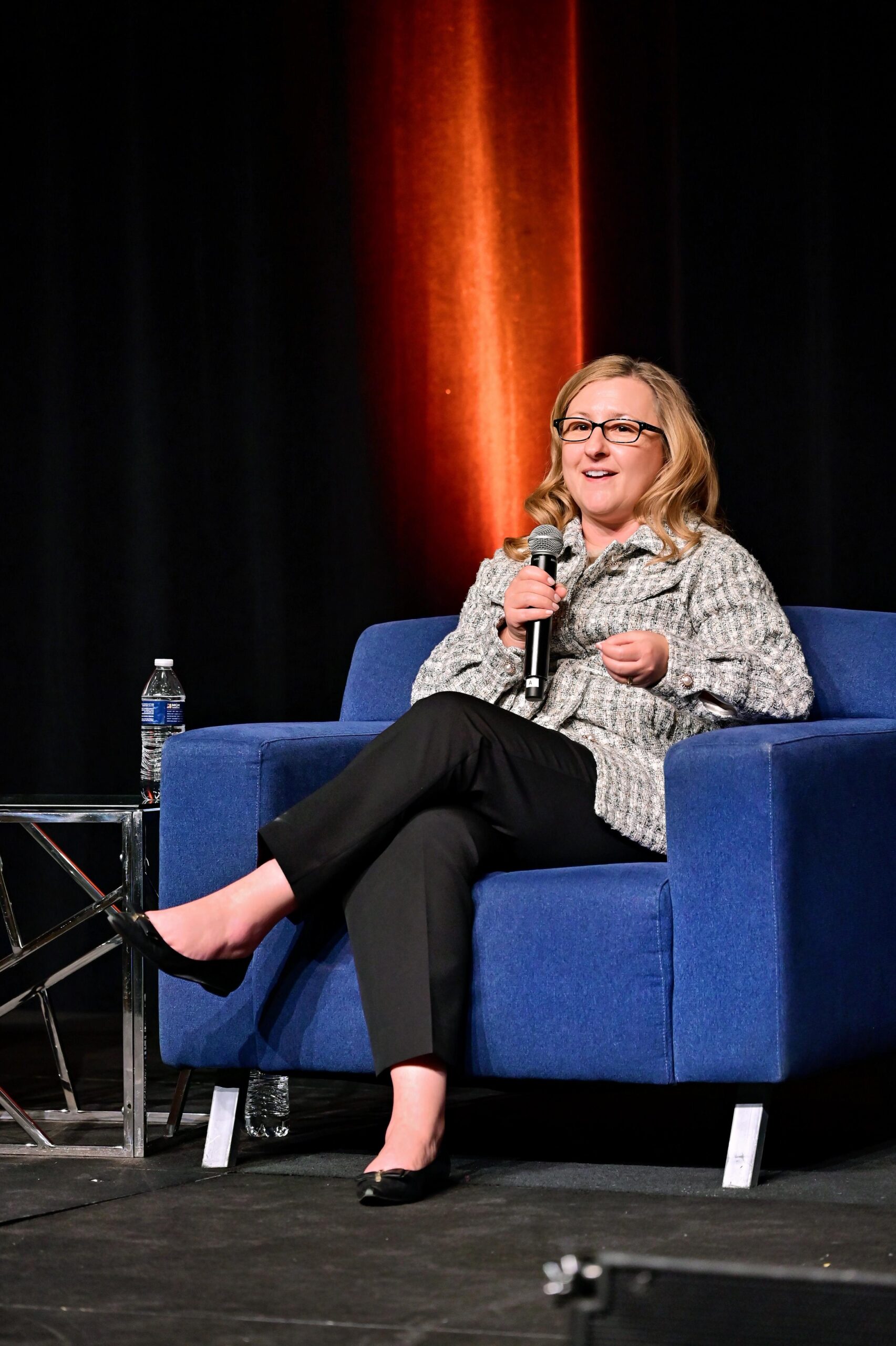Off-premises is a simple phrase to describe customers having food away from a restaurant, but for the industry, it represents multi-faceted operations across several digital platforms.
Representatives from four brands were on hand to kick-off the Food On Demand Conference to dig into what off-premises means in 2024. Moderating the conversation was Food on Demand Managing Editor Bernadette Heier, who asked Shake Shack Director of Digital Operations Michael Boyan about where third-party delivery stands with off-premises operations.

Michael Boyan, Shake Shack Director of Digital Operations
“After the pandemic, we were able to really take a step back and assess delivery and put in processes and standards in place to treat off-premise as a channel that’s not going away and that our guests love,” Boyan said. “People love using digital and delivery to get Shake Shack now, so we need to adapt to that.”
Boyan said it’s led Shake Shack to implement processes to handle the challenge of a high volume of orders coming in from channels such as third-party sources.
“Those processes break down into two parts,” Boyan said. “Working with our delivery partners and account managers, as well as our field operators in the store.”
With the latter, Boyan said Shake Shack has made an effort to comb through data and create internal reporting for individual stores to keep track of. The reports, Boyan said, include the monetary value of online ordering rates.
“We show how if a restaurant is offline for a certain amount of time, here is the revenue impact,” Boyan said. “That allows our managers and operators to hold their teams accountable with something tangible. Teams can then have more buy-in and think more about disabling it during buys times of the day.”
Joining Boyan on stage in the discussion were Papa Johns Head of Delivery Strategy, Andrew Garfrerick, Costa Vida Executive VP of Strategic Growth Wade Allen and Cousins Maine Lobster Head of Development Angela Coppler. The conversation with the four continued with a focus on tech stacks and how restaurant brands should approach them.
In his comments, Garfrerick said tech stacks are becoming more complex because customer engagement is higher with the industry than it’s ever been.

Wade Allen, Costa Vida EVP, Strategic Growth
“It’s a critical question for each brand based on their size and base,” Garfrerick said. “Operators have to ask themselves ‘can I build a fully customized, owned, tech stack that delivers the right customer experience for my customers and the 10 channels they engage with us on? Or do I need to build a lean, mean, API integrating machine that is the connective tissue that helps bring in vendors?’ That is a conundrum and there’s no right answer, really.”
Garfrerick reiterated how the matter varies by brand, but noted how modernizing tech stacks, especially the point-of-sale systems, is a top priority for several companies, including Papa Johns.
Creating a manageable off-premises operation is especially important for brands with an omni-channel presence, such as Costa Vida, which offers delivery, dine-in, pick-up, drive-thru and catering options. Allen was asked about how the brand handles the multi-channel work and he said the company chose to work on the “metrics that matter.”
“The metric we found that influenced all of our channels to be successful was ‘guests with a problem,’” Allen said. “We wanted to find out how many guests had a problem across these channels, vs. the number of transactions we’re conducting. We started measuring that and were able to find out where the problems were.”

Andrew Garfrerick (center) Head of Delivery Strategy at Papa Johns discusses how tech stacks are becoming more complex for restaurants.
Once they mined the data, Allen said Costa Vida worked to create consistency across its channels by distributing the metrics and a ranking of all the restaurants from start to bottom.
“We were able to create some gamification, how they’re winning and losing across these channels,” Allen said. “Then we put the right people in places. Once we established that, we started to get a lot of momentum. Our operators started to engage, and we built consistency across all of our channels, whether it was in the dining room, catering, drive-thru or in the to-go world.”
Strengthening off-premises operations also means improving customer engagement, and Coppler was able to weigh in on how Cousins Maine Lobster is creating a fully integrated consumer experience.
“We get a lot of feedback through social media as brands, and sometimes it can be difficult to control the narrative,” Coppler said. “So, we’ve spent a lot of time continuing to explore where and how we can get in front of that. Obviously engaging with Google My Business and Yelp, as well as getting out there and proactively managing responses to all of the customer feedback is important.
“There’s also an opportunity to engage more directly with our mobile app users,” said Coppler. “We’re continuing to partner and highlight opportunities with different third-party outlets to look at consumer feedback platforms, too. It’s been incredibly enlightening as we’ve gone over different pilots these past six months to see the initial insights leading us to the immediate ability to resolve problems.”

Angela Coppler, Cousins Maine Lobster Head of Development
Panelists were also asked during the discussion about the rising factor of automation, and both Coppler and Boyan weighed in with how their brands are using different technologies.
“Kiosks are a huge part of our business now,” Boyan said. “We made a major investment in 2022 to retrofit basically the rest of our fleet of stores with guest-facing kiosks. As of a few months ago, that project is complete, so we have kiosks in more than 90 percent of Shake Shack locations. It’s our fastest growing ordering channel.
“We took a big risk there, but we believe in it and there’s a lot we love about kiosks,” said Boyan. “The upsell potential, the higher check average and the merchandising ability… The other aspect is it’s a labor-saving automation tool and it allows our team not to be tied to a POS like they used to be. They can flex now.”
Coppler, meanwhile, shared how AI is becoming a factor for Cousins Maine Lobster.
“For us, as a mobile food business, AI can play a really big role in combining all of that mobility data with where and how we’re performing,” Coppler said. “When you layer on with that all of the variables happening on any given day in any given market, we have the ability to improve predictive analytics and better select locations. I think that’s applicable to brick-and-mortar stores as well.”


